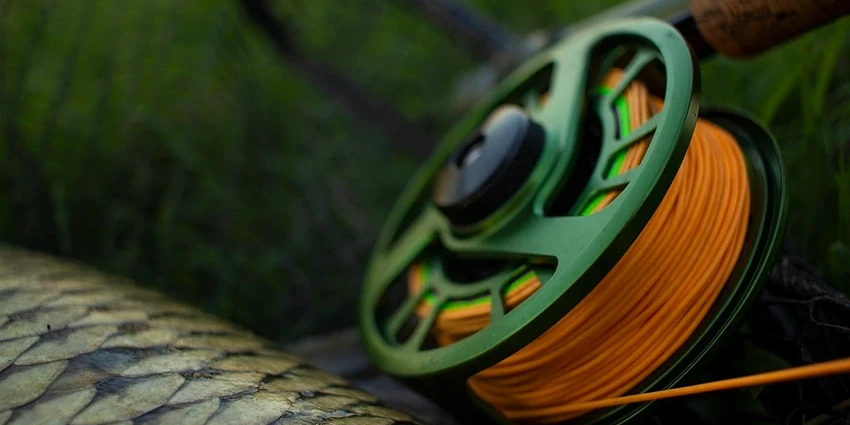All products were chosen independently by our editorial team. This review contains affiliate links and we may receive a commission for purchases made. Please read our affiliates FAQ page to find out more.
Carp fishing is more than just a hobby; it’s an art form. Whether you’re a seasoned angler or just dipping your toes into the waters of carp fishing, understanding the nuances of carp fishing rigs can be a game-changer. Let’s explore the world of carp rigs, where precision and passion come together.
Jump to:
Essential Equipment for Carp Fishing Rigs
Before you cast your line, it’s crucial to gear up with the right equipment. Here’s a quick rundown:
- Fishing Bait: The lure for your prey, ranging from boilies to pellets.
- Fishing Hook: The critical link between you and your catch.
- Hook Length: A strategic piece of line connecting the hook to the mainline.
- Swivel: A small but mighty component for linking lines.
- Lead System: A setup for attaching weights to your line.
- Lead: Weights to ensure your bait sinks to the desired depth.
- Leader: A line segment for extra protection and improved bait presentation.
The Basics of Carp Rig Design
Carp rigs are more than just a bunch of tackle; they’re a blend of science and creativity. Let’s explore some fundamental designs:
The Hair Rig
- Overview: A classic rig where the bait sits off the hook, making it irresistible to carp.
- Setup: Requires a hook, hair rig needle, braid, and bait.
- Expert Tip: Always use a sharp hook for better penetration.
The Running Rig
- Basics: A lead weight attached to your line with a freely running hook.
- Advantages: Excellent bite indication and reduced risk of the hook being thrown by the carp.
- Expert Tip: Ideal for pressured waters where carp are head-shakers.
Step-by-Step Guide to Tying Carp Rigs
Tying your own rigs can be incredibly rewarding. Here’s how to get started:
Tying the Hair Rig
- Thread bait onto the needle.
- Push the needle through the braid and secure the hook.
- Experiment with different baits for versatility.
Tying the Running Rig
- Attach a lead weight to the end of your line.
- Connect a hook to a length of line running through the weight.
- Adjust for sensitivity and responsiveness.
Choosing the Right Carp Rig for Different Situations
Selecting the perfect rig can be daunting, but here are some factors to consider:
- Water Temperature: Carp activity varies with temperature, influencing bait and rig choice.
- Depth and Bottom Composition: Different rigs excel at varying depths and bottom types.
- Carp Species and Behavior: Tailor your rig to the specific carp species and their habits.
- Bait Type: Match your rig to the bait for optimal results.
Fishing Rig Tips and Techniques for Success
To elevate your carp fishing game, keep these tips in mind:
- Match Bait to Conditions: Choose baits that suit the water clarity and temperature.
- Experiment: Don’t shy away from trying different baits and presentations.
- Be Patient: Carp fishing is a waiting game, filled with trial and error.
- Handle with Care: Always prioritize the well-being of the fish.
Common Mistakes to Avoid when Tying Rigs
Even the pros make mistakes. Here’s what to watch out for:
- Wrong Rig for Conditions: Always match your rig to the fishing environment.
- Incorrect Hook Size: Choose the hook size based on the fish size and bait.
- Ignoring Fish Behavior: Stay attuned to how the carp are reacting.
The Role of Bait in Carp Fishing Rigs
Bait selection can make or break your fishing experience. Here’s a quick guide:
- Effective Baits: Sweetcorn, boilies, maggots, and worms top the list.
- Flavored Baits: Carp love flavors like strawberry and tutti-frutti.
- Match Bait to Water Conditions: Choose natural baits for clear water and brighter ones for murky conditions.
Choosing the Right Hook Size for Your Carp Fishing Rig
The right hook size is crucial for a successful catch. Here’s how to choose:
- Larger Hooks for Bigger Baits: Match the hook size to your bait and fish size.
- Consider Fish Behavior: Finicky fish might require smaller hooks.
- Experiment: Don’t hesitate to try different sizes to see what works best.

Advanced Rig Techniques and Innovations
Carp fishing is constantly evolving, with new rig designs and innovations emerging regularly. Here are some advanced rigs to consider:
The Chod Rig
- Ideal For: Fishing in weedy or murky waters.
- Setup: Requires a chod hook, stiff monofilament, a bead, and bait.
- Expert Tip: Keep the line tight for effective use.
The Zig Rig
- Purpose: Targets carp at various depths.
- Components: A float, monofilament, and bait.
- Expert Tip: Adjust the depth based on carp activity and weather conditions.
The Blow Back Rig
- Design: Known for its sensitivity and responsiveness.
- Key Feature: A rig ring on the hook’s shank for an aggressive hooking angle.
- Expert Tip: Versatile for larger carp and areas with small fish.
Register for our latest in-depth reviews and product round-ups from the experts
Enter your email address below to receive our twice monthly reviews emails.
By entering your details, you are agreeing to our terms and conditions and privacy policy. You can unsubscribe at any time.
Common Mistakes and Troubleshooting
Even experienced anglers can encounter issues. Here are some common rig-related problems and how to solve them:
- Incorrect Rig for Conditions: Always adapt your rig to the specific fishing environment.
- Dull Hooks: Regularly check and sharpen your hooks for optimal performance.
- Poor Bait Presentation: Ensure your bait is well-presented and visible to the carp.
FAQs on Carp Fishing Rigs
The best rig varies based on conditions and personal preference. However, the hair rig and the running rig are widely regarded as versatile and effective.
A common practice is to start with a hook link that is 24 inches long. Adjust based on the fishing situation.
Begin with simple rigs like the hair rig or the running rig. These are easier to set up and effective in various conditions.
Tables: Carp Fishing Rig Essentials
| Rig Type | Ideal Conditions | Key Components |
| Hair Rig | General use | Hook, braid, bait |
| Running Rig | Pressured waters | Lead weight, hook |
| Chod Rig | Weedy/Murky waters | Chod hook, stiff monofilament |
| Zig Rig | Various depths | Float, monofilament, bait |
| Blow Back Rig | Larger carp/small fish areas | Hook, braided line, rig ring |







